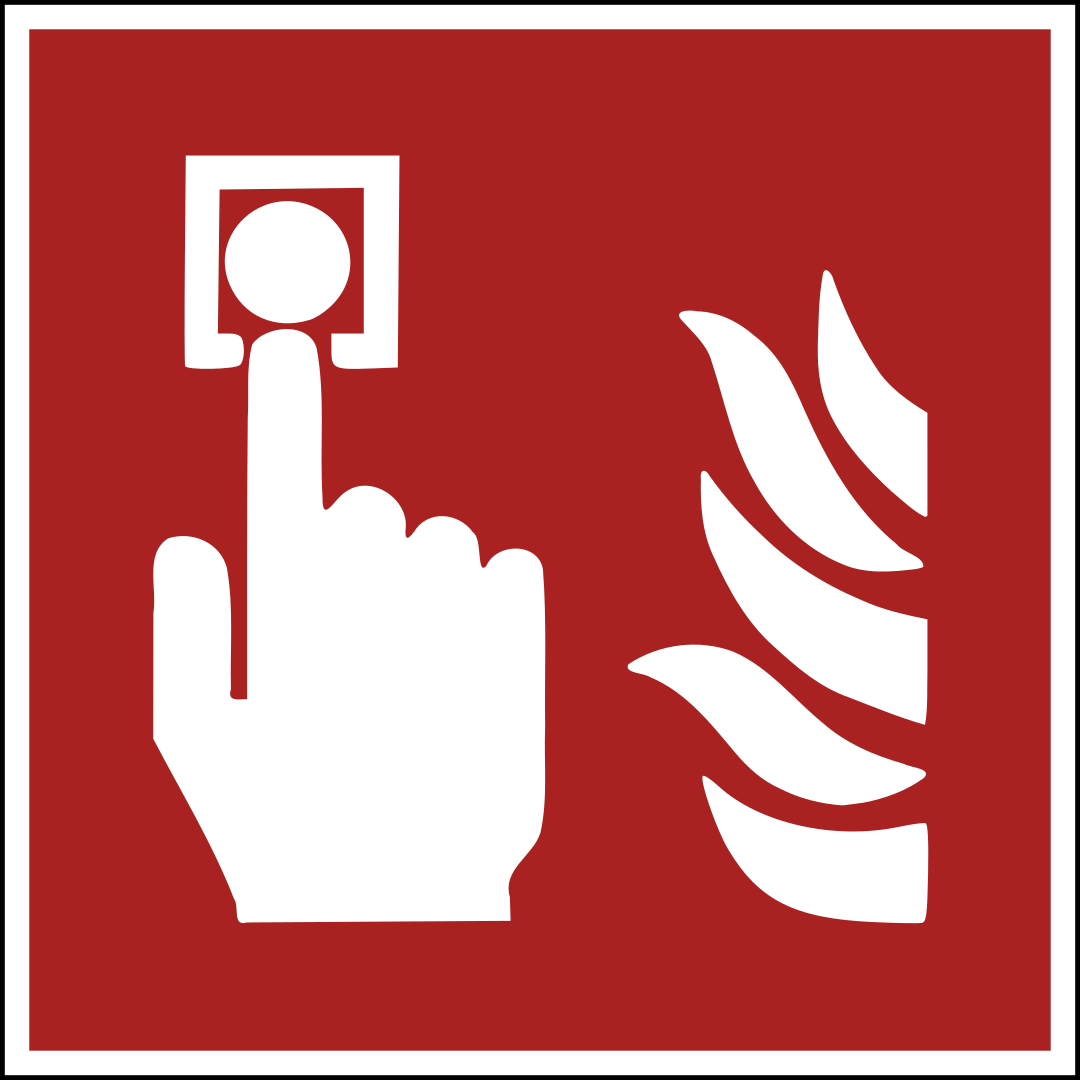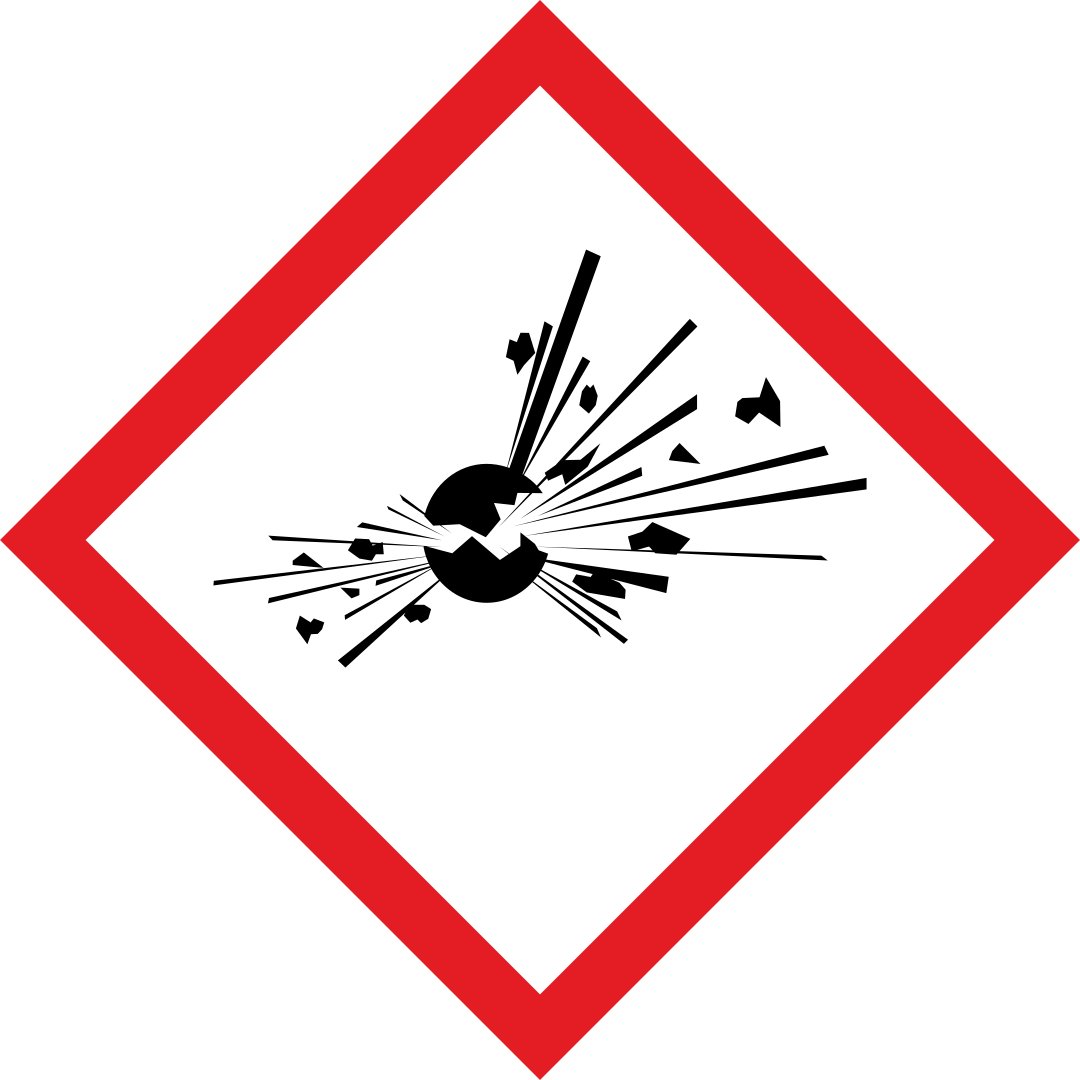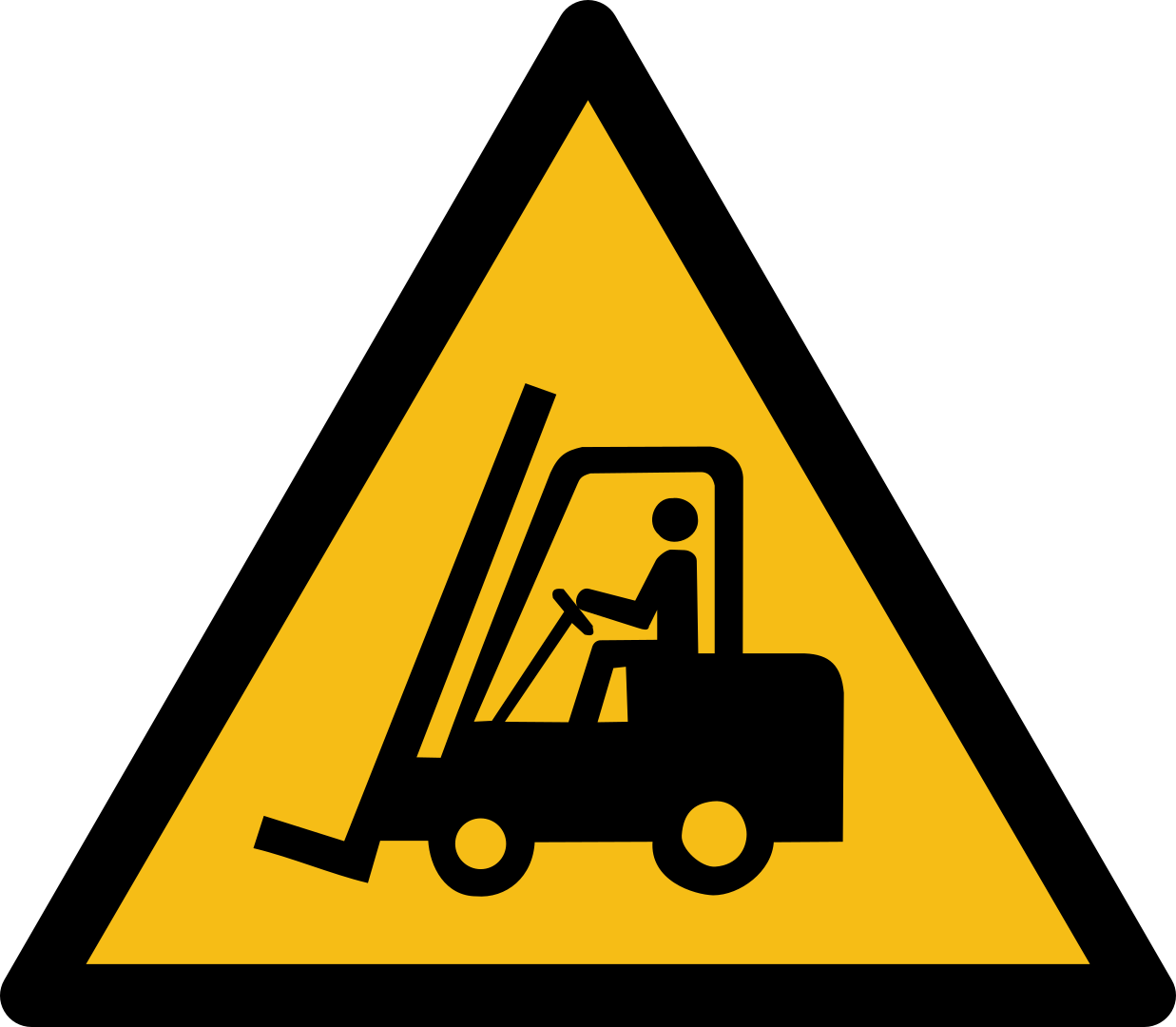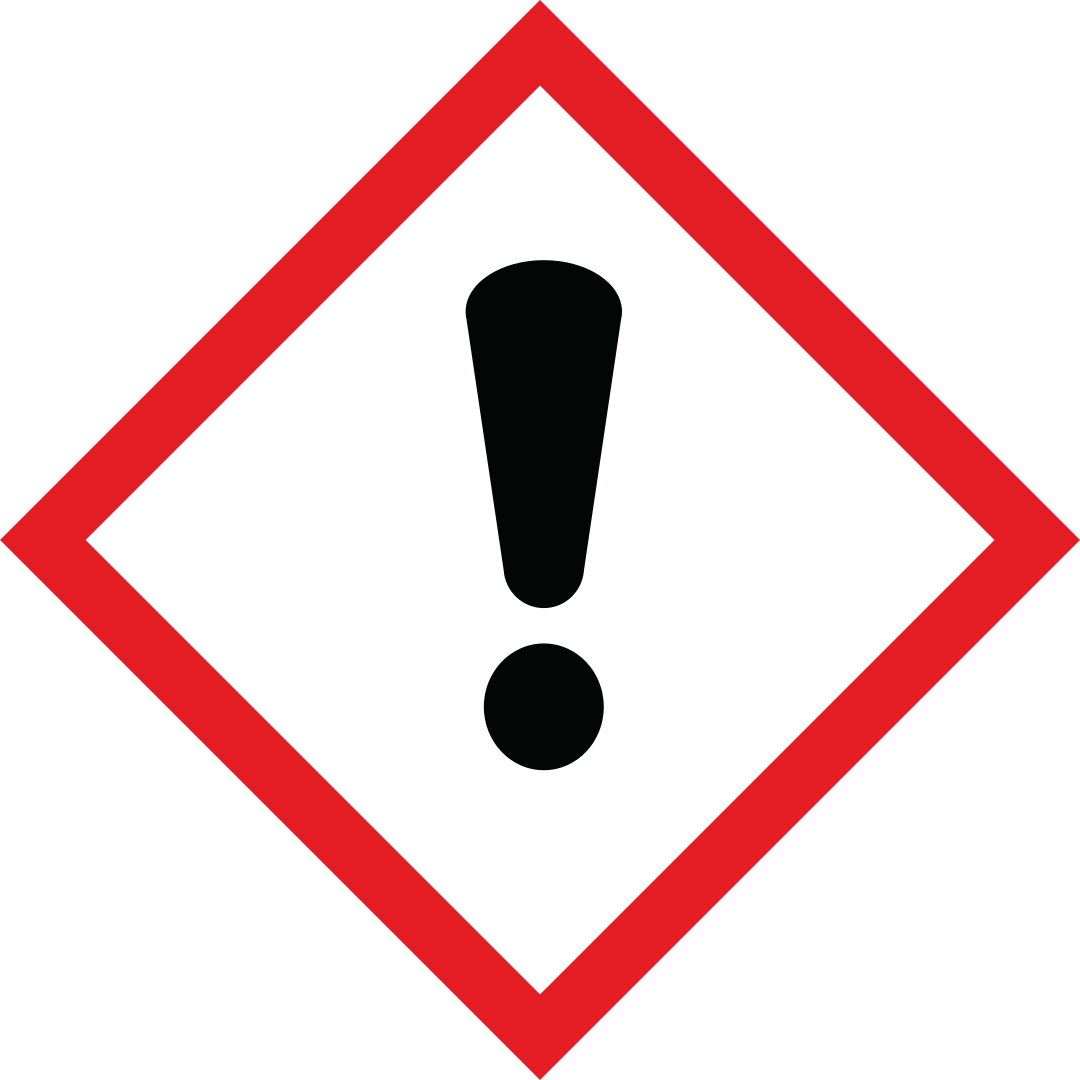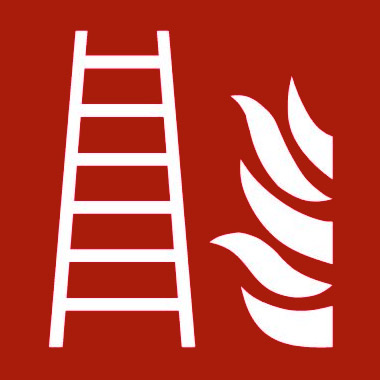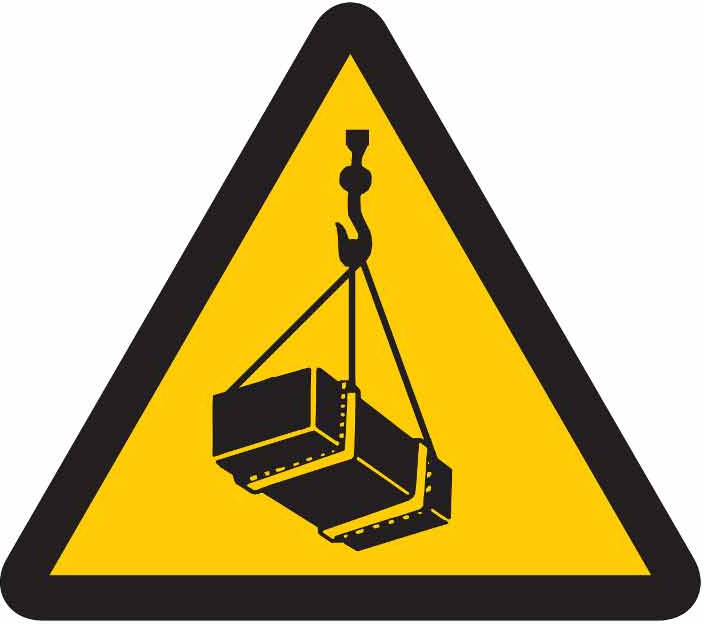You have 45 minutes to answer 50 multiple choice CSCS Green Card Mock Test questions for Operatives and Specialists. You need to answer at least 45 out of 50 questions correctly to pass. Answers may be reviewed after each question or at the end of the test. Good luck!
List of questions in above test (quick view). Click question box to reveal correct answer.
1. Why is it important to cooperate with your employer's health surveillance programme?
Give ONE answer
AB
C
D
Correct Answer: A
Explanation: Health surveillance helps employers catch disease early, and protect workers from harmful exposure.
Explanation: Health surveillance helps employers catch disease early, and protect workers from harmful exposure.
2. Your colleague suggests a shortcut that will help you meet a work deadline. What should you do?
Give ONE answer
AB
C
D
Correct Answer: A
Explanation: Do not take shortcuts. They can create dangerous work conditions for yourself or others.
Explanation: Do not take shortcuts. They can create dangerous work conditions for yourself or others.
3. Which of the following is TRUE about health conditions contracted from respiratory hazards?
Give ONE answer
AB
C
D
Correct Answer: B
Explanation: Health conditions contracted from respiratory hazards can be fatal, and cannot always be treated.
Explanation: Health conditions contracted from respiratory hazards can be fatal, and cannot always be treated.
4. Which of the following types of wood dust is a known carcinogen?
Give ONE answer
AB
C
D
Correct Answer: A
Explanation: Hardwood dust is a known carcinogen.
Explanation: Hardwood dust is a known carcinogen.
5. Whilst painting a bathroom, you begin to feel dizzy. What might this mean?
Give ONE answer
AB
C
D
Correct Answer: A
Explanation: Vapours can cause dizziness and headaches at high concentrations.
Explanation: Vapours can cause dizziness and headaches at high concentrations.
6. Which of the following is the MOST effective dust-capture method?
Give ONE answer
AB
C
D
Correct Answer: A
Explanation: Tools with dust-capture devices fitted are the most effective precaution.
Explanation: Tools with dust-capture devices fitted are the most effective precaution.
7. What is TRUE when you are wet cutting?
Give ONE answer
AB
C
D
Correct Answer: D
Explanation: RPE must always be worn, as controlling the dust does not eliminate the risk.
Explanation: RPE must always be worn, as controlling the dust does not eliminate the risk.
8. How can you adapt a dust mask to make it suitable for protecting against hazardous fumes?
Give ONE answer
AB
C
D
Correct Answer: C
Explanation: Never try to adapt RPE for a task it is not suited for.
Explanation: Never try to adapt RPE for a task it is not suited for.
9. What is true about equipment with yellow-coded voltage?
Give ONE answer
AB
C
D
Correct Answer: A
Explanation: Yellow indicates 110 volt equipment. This includes most electrical tools on site. Shocks will be painful, but are unlikely to be severe.
Explanation: Yellow indicates 110 volt equipment. This includes most electrical tools on site. Shocks will be painful, but are unlikely to be severe.
10. How can you tell if your ear defenders are fitted effectively?
Give ONE answer
AB
C
D
Correct Answer: A
Explanation: Ear defenders must seal tightly against your head. They are not effective if worn with glasses, and it is normal for them to become sweaty or uncomfortable after long periods of use.
Explanation: Ear defenders must seal tightly against your head. They are not effective if worn with glasses, and it is normal for them to become sweaty or uncomfortable after long periods of use.
11. A colleague 2 metres away cannot hear you unless you raise your voice. What does this suggest?
Give ONE answer
AB
C
D
Correct Answer: B
Explanation: Having to raise your voice to be heard by someone 2 metres away suggests the noise levels have, at minimum, reached the lower exposure action level.
Explanation: Having to raise your voice to be heard by someone 2 metres away suggests the noise levels have, at minimum, reached the lower exposure action level.
12. Which TWO of the following is your employer legally obliged to do regarding your daily vibration dose?
Give TWO answers
AB
C
D
Correct Answer: A, C
Explanation: Your employer must ensure you do not receive damaging vibration dosages, and must furnish you with usage limit information.
Explanation: Your employer must ensure you do not receive damaging vibration dosages, and must furnish you with usage limit information.
13. What is the construction industry trying to improve regarding its environmental damage?
Give ONE answer
AB
C
D
Correct Answer: D
Explanation: The construction industry is increasingly focusing on sustainability.
Explanation: The construction industry is increasingly focusing on sustainability.
14. What are THREE examples of sustainable construction practices?
Give THREE answers
AB
C
D
E
F
Correct Answer: A, D, E
Explanation: Locally sourced materials and labour will help reduce the project's carbon footprint. Building units off-site will also help design out waste.
Explanation: Locally sourced materials and labour will help reduce the project's carbon footprint. Building units off-site will also help design out waste.
15. Which of the following is the best location for refuelling a vehicle?
Give ONE answer
AB
C
D
Correct Answer: A
Explanation: Controlled areas with flat, hard surfaces are best to avoid fuel leaking into the ground.
Explanation: Controlled areas with flat, hard surfaces are best to avoid fuel leaking into the ground.
16. How will you know which fluids are allowed down which drains?
Give ONE answer
AB
C
D
Correct Answer: C
Explanation: Drains on site must be colour-coded.
Explanation: Drains on site must be colour-coded.
17. You notice roadworks are causing unnecessary congestion. What should you do?
Give ONE answer
AB
C
D
Correct Answer: D
Explanation: Talk to your supervisor if you think an unnecessary nuisance is being caused.
Explanation: Talk to your supervisor if you think an unnecessary nuisance is being caused.
18. You are involved in a chemical spill. What should be your FIRST action?
Give ONE answer
AB
C
D
Correct Answer: A
Explanation: You must always assess the risk involved before taking further action.
Explanation: You must always assess the risk involved before taking further action.
19. Your site is part of the Considerate Constructors Scheme. What does this mean?
Give ONE answer
AB
C
D
Correct Answer: D
Explanation: The Considerate Constructors Scheme ensures participating sites are respectful of the public and of neighbours.
Explanation: The Considerate Constructors Scheme ensures participating sites are respectful of the public and of neighbours.
20. What is the BIGGEST risk when excavating near a wall or a structure?
Give ONE answer
AB
C
D
Correct Answer: C
Explanation: Excavations may undermine the stability of walls or structures that are nearby.
Explanation: Excavations may undermine the stability of walls or structures that are nearby.
21. Which of the following are examples of underground services?
Check ALL that apply
AB
C
D
E
F
Correct Answer: C, D, F
Explanation: Underground services include electric or fibre optic cables, sewer or water pipes, and fuel pipes, among other services.
Explanation: Underground services include electric or fibre optic cables, sewer or water pipes, and fuel pipes, among other services.
22. How should you disconnect underground services?
Give ONE answer
AB
C
D
Correct Answer: D
Explanation: Your employer will arrange for services to be disconnected, if this is possible
Explanation: Your employer will arrange for services to be disconnected, if this is possible
23. You are working on a flat roof. How should you protect yourself from falls?
Give ONE answer
AB
C
D
Correct Answer: C
Explanation: A guardrail and toe board is the best way to protect yourself from falls in this situation.
Explanation: A guardrail and toe board is the best way to protect yourself from falls in this situation.
24. Why do mobile access towers often cause accidents?
Give ONE answer
AB
C
D
Correct Answer: C
Explanation: Mobile access towers are convenient and safe pieces of equipment. However, they are often built or used in such a way that they become unstable.
Explanation: Mobile access towers are convenient and safe pieces of equipment. However, they are often built or used in such a way that they become unstable.
25. How will you know which fire extinguisher you must use on a given job?
Give ONE answer
AB
C
D
Correct Answer: A
Explanation: A hot works permit will tell you which fire extinguisher must be available.
Explanation: A hot works permit will tell you which fire extinguisher must be available.
26. What are the TWO purposes of fire extinguishers?
Give TWO answers
AB
C
D
E
Correct Answer: B, C
Explanation: Extinguishers are for the purpose of helping a person escape and fighting very minor fires.
Explanation: Extinguishers are for the purpose of helping a person escape and fighting very minor fires.
27. How much of a flammable liquid should be removed from a cannister at any given time?
Give ONE answer
AB
C
D
Correct Answer: C
Explanation: You should never remove more liquid than is immediately required.
Explanation: You should never remove more liquid than is immediately required.
28. What are two things you must ensure when working with asbestos?
Give TWO answers
AB
C
D
E
Correct Answer: B, E
Explanation: You must follow the correct on-site safety procedures regarding PPE and personal care.
Explanation: You must follow the correct on-site safety procedures regarding PPE and personal care.
29. Dermatitis is a condition that is most likely to develop from exposure to what?
Give ONE answer
AB
C
D
Correct Answer: D
Explanation: Wet cement is a skin sensitiser, and can cause dermatitis.
Explanation: Wet cement is a skin sensitiser, and can cause dermatitis.
30. Your employer requests that you begin health surveillance. What does this mean?
Give ONE answer
AB
C
D
Correct Answer: B
Explanation: You are legally obliged to cooperate with health surveillance so that safety precautions can be monitored.
Explanation: You are legally obliged to cooperate with health surveillance so that safety precautions can be monitored.
31. Your colleague working in a deep excavation collapses. What should you do?
Give ONE answer
AB
C
D
Correct Answer: D
Explanation: You must raise the alarm and monitor the situation, but do not put yourself at risk by entering the excavation.
Explanation: You must raise the alarm and monitor the situation, but do not put yourself at risk by entering the excavation.
32. There is a live cable in your workspace, and your colleague has made contact with it. What should you do?
Give ONE answer
AB
C
D
Correct Answer: B
Explanation: You must call for help and isolate the live cable.
Explanation: You must call for help and isolate the live cable.
33. What daily intake of alcohol is recommended by the Department of Health?
Give ONE answer
AB
C
D
Correct Answer: B
Explanation: For both men and women, the recommended limit is 2 units.
Explanation: For both men and women, the recommended limit is 2 units.
34. You are operating heavy machinery, but it is your birthday and you go to the pub at lunch. What is your drink limit if you want to safely return to operate your vehicle?
Give ONE answer
AB
C
D
Correct Answer: D
Explanation: You cannot operate machinery safely with any amount of alcohol in your system.
Explanation: You cannot operate machinery safely with any amount of alcohol in your system.
35. You go to make a cup of tea, but there is no way to boil water. What should you do?
Give ONE answer
AB
C
D
Correct Answer: C
Explanation: Employers must provide you with a way of boiling water.
Explanation: Employers must provide you with a way of boiling water.
36. You think you may be beginning to suffer from work-related stress. WHEN should you look for help?
Give ONE answer
AB
C
D
Correct Answer: A
Explanation: Always seek out support when you notice the first signs that you may be suffering from ill mental health.
Explanation: Always seek out support when you notice the first signs that you may be suffering from ill mental health.
37. You are lifting a beam that is weighted more heavily on one side. How should you carry it?
Give ONE answer
AB
C
D
Correct Answer: C
Explanation: Always carry unevenly weighted loads with the heavier side facing you.
Explanation: Always carry unevenly weighted loads with the heavier side facing you.
38. Which of the following is a PROHIBITION sign?
Give ONE answer
AB
C
D
Correct Answer: C
Explanation: This sign indicates water which must not be drunk.
Explanation: This sign indicates water which must not be drunk.
39. What should you be especially careful of when using a substance marked with this symbol?
Give ONE answer

B
C
D
Correct Answer: D
Explanation: Signs with this symbol act as oxidisers. This means they will increase the intensity of a fire.
Explanation: Signs with this symbol act as oxidisers. This means they will increase the intensity of a fire.
40. Which TWO of the following signs may you see if materials are being loaded onto a scaffold?
Give TWO answers
AB
C
D
E
Correct Answer: B, D
Explanation: When materials are being moved, you may see warning signs for forklift trucks and overhead loads.
Explanation: When materials are being moved, you may see warning signs for forklift trucks and overhead loads.
41. You open your water bottle to hydrate, but you see this sign. What now?
Give ONE answer

B
C
D
Correct Answer: C
Explanation: This sign is used to prohibit using taps for drinking water where the water is unsuitable. It does not prohibit drinking.
Explanation: This sign is used to prohibit using taps for drinking water where the water is unsuitable. It does not prohibit drinking.
42. What is this sign warning you about?
Give ONE answer
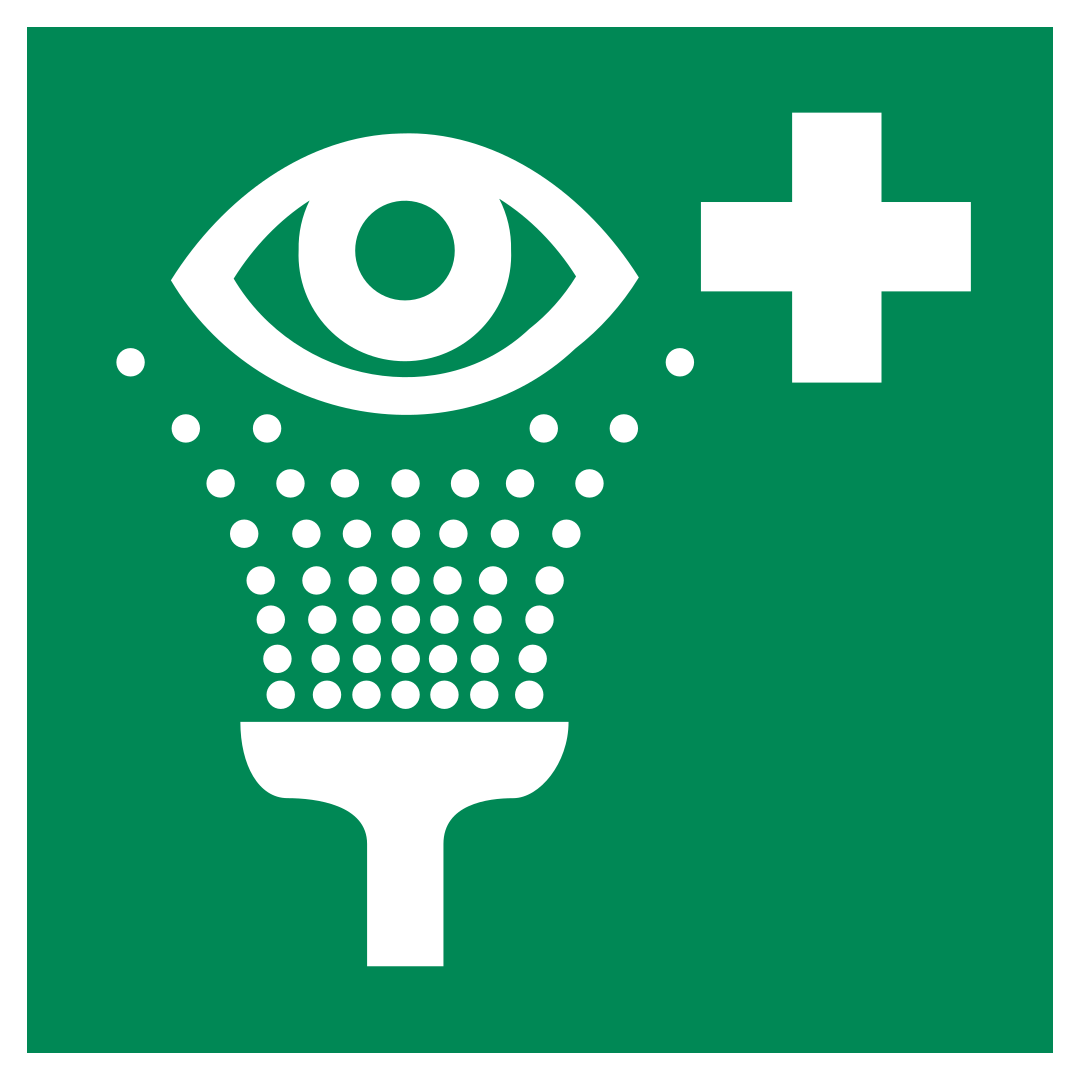
B
C
D
Correct Answer: D
Explanation: This sign is used for eyewash stations. It is not a warning sign.
Explanation: This sign is used for eyewash stations. It is not a warning sign.
43. You need to get through an area that is marked as 'no unauthorised access', but you are not authorised. What should you do?
Give ONE answer
AB
C
D
Correct Answer: A
Explanation: Do not go through prohibited areas if you are not authorised to do so.
Explanation: Do not go through prohibited areas if you are not authorised to do so.
44. You have finished a job, and the signage is no longer necessary. What should happen?
Give ONE answer
AB
C
D
Correct Answer: D
Explanation: Your employer is responsible for ensuring unnecessary signage is removed.
Explanation: Your employer is responsible for ensuring unnecessary signage is removed.
45. Which ONE of the following best describes a mobile plant?
Give ONE answer
AB
C
D
Correct Answer: C
Explanation: A mobile plant is anything vehicle that can move, either by itself or through being towed.
Explanation: A mobile plant is anything vehicle that can move, either by itself or through being towed.
46. What is the MOST important factor to take into account when planning a vehicle route on site?
Give ONE answer
AB
C
D
Correct Answer: A
Explanation: Route planning must always take into account ground conditions, as they may affect how likely a vehicle is to overturn.
Explanation: Route planning must always take into account ground conditions, as they may affect how likely a vehicle is to overturn.
47. What potentially fatal risk is created by a slewing excavator?
Give ONE answer
AB
C
D
Correct Answer: A
Explanation: Plants slewing near a fixed point create a crush zone which may fatally trap people.
Explanation: Plants slewing near a fixed point create a crush zone which may fatally trap people.
48. What must be in place for you to supervise a crane lift?
Give ONE answer
AB
C
D
Correct Answer: A
Explanation: You must be fully trained, and have your competence verified through assessment.
Explanation: You must be fully trained, and have your competence verified through assessment.
49. What does this signal mean?

B
C
D
Correct Answer: A
Explanation: This signal indicates something must be lowered.
Explanation: This signal indicates something must be lowered.
50. When are pedestrians at MOST risk from a site vehicle?
Give ONE answer
AB
C
D
Correct Answer: B
Explanation: Pedestrians are at greatest risk when a vehicle is reversing.
Explanation: Pedestrians are at greatest risk when a vehicle is reversing.

